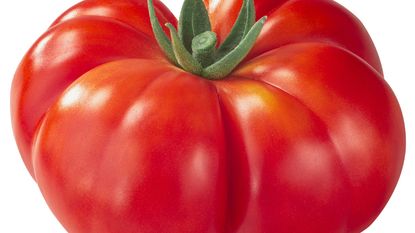Reisetomate Heirloom Tomato Plant History


The first time I saw a reisetomate tomato I thought of radioactivity and mutant cell division. This may be a dismal projection but the appearance was so out of my realm of experience when I think "tomato" that it threw my brain for a loop. Reisetomate tomato plants are ancient plants in the nightshade family, closely aligned with peppers and eggplants. They purportedly originated in early Peruvian civilization, but their unique appearance and tangy flavor put them sharply on today's dinner menus.
Reisetomate Tomato History
Growing heirloom tomatoes is a delightful way to preserve our heritage, discover other countries and civilizations and simply try something new. Every nationality has its favorite food crops and varieties of universal fruits and vegetables. The reisetomate tomato history is a perfect one to illustrate the convoluted and controversial history of one single fruit type. As you are growing these stunning little tomatoes, consider where they may have come from and for what purpose they might have been developed.
Reisetomate means "travelers tomato" in German. Reisetomate tomato plants may bear the moniker because you can pull off a lobe and put the rest of the tomato in your pocket for later. Some sources state this tomato was originally cultivated by the Dutch or even the Austrians. The fruits also definitely have a resemblance to some used by the original denizens of Central America. We also have the claim that they are from ancient Peruvian cultivation.
Whatever the genesis, this tomato is a visual oddity. It has the appearance of numerous cherry tomatoes all fused together in one glorious experiment. Each section of the tomato can be pulled apart without a knife. The globular fruit is a miracle of natural invention and gives guarantee that whoever made our world had a sense of humor.
About Reisetomate Heirloom Tomato
Reisetomate plants have sections like an orange that may be hand pulled from the main bunch. I have seen similar anomalies in my pear and slicing tomatoes, but these were just one-offs that happened due to genetic hiccups in the development of the fruit. The reisetomate heirloom tomato fruits will all produce these highly clustered, yet single, tomatoes.
If there is a genetic hiccup, it happened to the whole plant and not just the occasional fruit, which are borne 79 to 85 days from seeding. The flavor is sweet, yet sharp and acidic, but not bitter or too sour. It's a lovely tomato to just eat out of hand as a snack or add to your favorite salad, providing bite sized little delights for the kitchen and lunch box.
Growing Heirloom Tomatoes
Seeds of this variety can be difficult to source. They may be best found from seed exchanges or friends that have the variety, as sellers may not have a true strain. As with all tomatoes, start with organic rich soil that has been tilled to a depth of at least 12 inches, drains well and is in a full sun location. Start seeds indoors in flats up to 6 weeks before planting out or direct seed when soil has warmed up to 60 degrees Fahrenheit (15 C.) and all danger of frost has passed.
Gardening tips, videos, info and more delivered right to your inbox!
Sign up for the Gardening Know How newsletter today and receive a free download of our most popular eBook "How to Grow Delicious Tomatoes."
Make sure you take the time to harden off indoor seedlings to prevent shock during transplant. Provide at least 1 ½ inches of water per week, preferably to the roots. Tomatoes benefit from mulching and in cooler areas applying red or dark mulch around the roots can enhance early growth. Be cautious about overfeeding tomatoes with a high nitrogen plant food, as this will just encourage leafy growth at the expense of those fun clustered fruits. Harvest these little jewels as soon as they have a deep red color and plump appearance. Don't forget to save some seeds for the next year to ensure a consistent supply of these quizzical fruits.
-
 Grow a Bathroom Oasis: 8 Best Bathroom Plants With No Light or Low Light
Grow a Bathroom Oasis: 8 Best Bathroom Plants With No Light or Low LightSome apartment dwellers grow the best bathroom plants with no light or low light. Read how one of our favorite plant lovers does it in the big city.
By Teo Spengler
-
 "My Worst Mistake" – Gardeners Share 10 Hard-Learned Lessons
"My Worst Mistake" – Gardeners Share 10 Hard-Learned LessonsGardeners never stop learning, and sometimes our mistakes are the best teachers. But why not save time and heartache by learning from other gardeners' failures?
By Melanie Griffiths